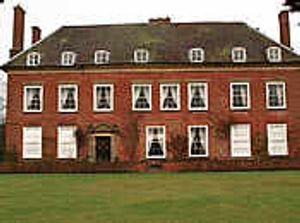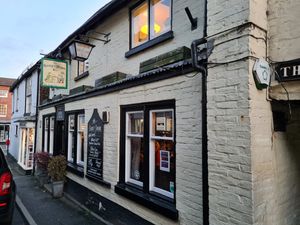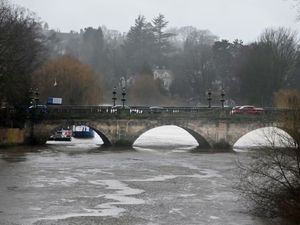Murder at the mansion
One of Shropshire's most notorious murders was committed two decades ago today at a remote countryside mansion. No one has ever been convicted of the crime, but the case remains open.

One of Shropshire's most notorious murders was committed two decades ago today at a remote countryside mansion. No one has ever been convicted of the crime, but the case remains open. Sharon Walters who reported on the events for the Shropshire Star in 1987, looks back at the amazing story.
 Today it is 20 years since retired architect Simon Dale was found battered to death at his country home on the south Shropshire border.
Today it is 20 years since retired architect Simon Dale was found battered to death at his country home on the south Shropshire border.
The partially sighted eccentric recluse was convinced that Heath House at Hopton Heath was an integral part of the legend of King Arthur, and that the Holy Grail was buried nearby.
His death remains one of West Mercia Police's few unsolved murders and the file remains open to this day, although there are no plans to make the inquiry active.
However, it did lead to the discovery of a cruel fraud that left the widow of a former Postmaster General and cabinet minister to die penniless in a Herefordshire nursing home. And the person convicted of that fraud was none other than her own niece, and direct descendant of the abolisher of slavery William Wilberforce: Baroness Susan de Stempel.
The Baroness was once married to Simon Dale and was the only suspect in the murder inquiry.
She was charged with the murder but with no physical evidence to connect her she was cleared. She was, however, convicted - along with two of her children, Sophia and Marcus - of the cold-hearted defrauding of her elderly aunt.
It was the stuff that film scripts are made of, and it all happened in quiet rural idylls in north Herefordshire and south Shropshire.
The story began back in 1957 when Susan married Simon Dale after a failed affair with Baron Michael de Stempel, a European aristocrat.
 They moved to Heath House and had five children, but by the end of the 1960s the marriage was over and they divorced in 1972.
They moved to Heath House and had five children, but by the end of the 1960s the marriage was over and they divorced in 1972.
Efforts by Susan failed to secure the sale of the house and Simon Dale continued to live there, working on his theory of the King Arthur connections. He worked on books and lived more or less as a recluse.
Police theory is that Susan finally snapped and battered him to death in the kitchen of his home.
He was found by his editorial assistant Giselle Wall, who still lives in the area, his supper of toad-in-the-hole still cooking in the oven.
No weapon was found, and while circumstantial evidence pointed at Susan, nothing concrete could be found to link her to the death.
During the murder trial she remained utterly calm and detached. Apparently believing that she was above everyone, she treated even prosecuting counsel and the trial judge with contempt. Her iciness and aloof attitude astounded police.
But it was during investigations into the death of Simon Dale that suspicions of fraud were aroused. So once the murder trial was over, proceedings began in relation to the matter of fraud. The aloofness continued.
In late 1984 Susan had finally married her baron and acquired her title.
 Shortly after that, the Baroness's aunt, Lady Illingworth (widow of former cabinet minister Lord Albert Illingworth), who was suffering from dementia, was invited by Susan for a holiday at her then home in Docklow, north Herefordshire.
Shortly after that, the Baroness's aunt, Lady Illingworth (widow of former cabinet minister Lord Albert Illingworth), who was suffering from dementia, was invited by Susan for a holiday at her then home in Docklow, north Herefordshire.
Within weeks her considerable fortune - money, gold bars, valuable paintings - had disappeared, her will had been forged and she was soon in a nursing home, where she subsequently died.
Stripped of any means of payment the funeral bill went unpaid and no one collected her ashes, which were scattered in a garden of remembrance by the undertakers. There was no sign of her family.
As in the previous trial, police were astounded by the detachment shown by the Baroness and by her daughter. All four defendants were convicted: the Baroness got seven years; the Baron four years; Sophia 30 months; and Marcus 18 months.
To this day detectives repeat there was only ever one suspect for the murder of Simon Dale.
Curiously back in 1968 a local GP, Dr Alan Beach, was lured to the house by the husband of a patient who was unhappy about treatment of his wife.
Dr Beach was shot dead in his car in the drive. The house had a history.




